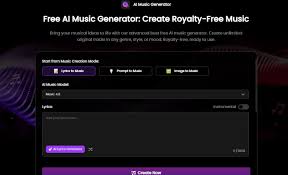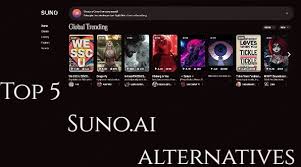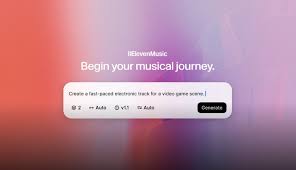As AI-generated music becomes a popular choice for advertising content, many marketers assume it's "safe by default." After all, it's original, algorithmically composed, and royalty-free—right?
Not necessarily.
In fact, AI music can still trigger copyright claims if it’s used without the proper licensing or understanding of how usage rights work. Whether you’re publishing an Instagram ad, a YouTube pre-roll, or a podcast spot, copyright compliance is essential—not only to avoid takedowns and demonetization but also to protect your brand reputation.
In this guide, we break down exactly how to avoid copyright claims when using AI music in ads, with real-world use cases, platform-specific tips, and best practices that even experienced marketers sometimes overlook.

Why AI Music Still Requires Licensing
Let’s clear up a common myth:
Just because music is generated by artificial intelligence doesn’t mean it’s automatically copyright-free.
Here’s why:
The platform that created the music often holds the copyright or licenses it on behalf of AI composers.
Platforms like AIVA, Mubert, Soundraw, or Loudly provide users with a license to use their music—not full ownership.
YouTube, TikTok, Facebook, and Spotify still scan for music fingerprints, including AI-generated tracks, to protect content creators and rights holders.
So, if you use AI music in ads without the proper license—or from a free plan that doesn’t allow commercial use—you could still be hit with:
Content ID copyright claims
Monetization blocks
Takedown notices
Legal disputes
Common Causes of Copyright Claims When Using AI Music
Understanding where things go wrong is the first step to preventing problems. Here are the top reasons AI music triggers copyright issues:
| Cause | Explanation |
|---|---|
| ? Using free AI music for commercial purposes | Most free plans (like AIVA Free or Mubert Free) are for personal use only |
| ? Failing to download or retain a license file | Without proof, you can’t dispute a copyright claim |
| ? Reusing AI music across multiple brands | Most licenses are non-transferable |
| ? Uploading AI music to YouTube as standalone content | This violates most terms of service |
| ? Choosing platforms without proper licensing infrastructure | Some AI tools don’t offer valid commercial use at all |
Step-by-Step: How to Avoid Copyright Claims When Using AI Music in Ads
1. Choose a Commercial-Friendly AI Music Platform
Not all AI music tools allow for advertising or monetized distribution. Choose a platform that clearly offers commercial-use licenses, such as:
| Platform | Allows Use in Ads? | License Documentation | Notes |
|---|---|---|---|
| AIVA | ? (Pro/Enterprise) | ? Yes | Good for cinematic brand content |
| Mubert | ? (Creator+) | ? Yes | Popular for quick social videos |
| Soundraw | ? (All paid plans) | ? Yes | Ideal for reels and intros |
| Amper Music | ? (Premium) | ? Yes | Offers simple use cases |
2. Check the License Terms Before Use
Always confirm the following:
Does the license cover advertising?
Is broadcasting (TV, OTT, social media ads) included?
Can the music be used in client projects?
Are there geographical restrictions?
Example: AIVA’s Creator Plan allows for monetized YouTube use but prohibits redistribution to clients. If you're making an ad for a third party, you'll need AIVA Pro or higher.
3. Download and Store the License Certificate
Every time you generate or export a track, make sure to:
Download the license or usage certificate
Save the file in the same folder as your ad assets
Keep a copy for at least 12 months in case of takedown disputes
Some platforms (like Mubert Render) embed the track ID in the file name. Use that to match against your export records.
4. Avoid Uploading AI Music as Standalone Content
Uploading a track created by AIVA or Mubert as a “chill beats” YouTube video—even if edited slightly—can:
Violate terms of use
Compete with licensed artists on Spotify
Trigger Content ID matches (especially if others use the same AI track)
?? Use AI music only as part of branded content, not as a music product itself.
5. Keep Platform Documentation in Case of Dispute
Even if you’re following all the rules, YouTube’s automated systems may still flag your content. In this case:
File a Content ID dispute via YouTube Studio
Attach your license file as proof
Provide a link to the AI music platform’s license page
Include the original export name or ID
Most platforms (like Soundraw or AIVA) also provide support teams who can help resolve disputes faster.
Real-World Example
Imagine you create a Facebook ad for a fitness app using a Mubert-generated techno track from the Creator plan. Two weeks later, Meta flags it due to a copyright match from another user.
What went wrong?
You used an AI track that’s also used by others (Mubert’s library isn’t exclusive)
You didn’t upload a license certificate during ad creation
The ad manager’s automated scanner couldn’t verify the source
Solution:
Use Mubert Render + license export → store proof → appeal with documentation. Or, for exclusive use, contact Mubert for an Enterprise agreement.
Bonus Tips for Copyright-Safe AI Music Ads
? Use AI platforms that allow customizable tracks (so your version is less likely to be flagged)
? If you’re using AI music in a client’s ad, always ensure your license allows redistribution
? Add text overlays or voiceovers—this reduces the chance of your music being matched as "standalone"
? Consider using stems or MIDI exports from platforms like AIVA, and customize in your DAW for originality
? Avoid using free trials for commercial projects—they’re almost always restricted to personal/non-monetized use
Conclusion: Stay Creative, Stay Legal
AI music is a powerful tool for modern advertising—affordable, fast, and surprisingly on-brand. But legal safety is not automatic.
To avoid copyright claims when using AI music in ads, you must:
Choose platforms that explicitly support commercial use
Read and retain license terms
Keep proof of usage rights
Avoid using generic or overused tracks without editing
Understand platform-specific rules
The more proactive you are, the less likely you'll face demonetization or takedowns—and the more time you’ll have to focus on what matters: making great branded content.
Frequently Asked Questions
Is AI-generated music truly copyright-free?
No. It’s typically licensed by the platform that created it. You need permission to use it commercially.
Can I get a copyright strike for AI music I paid for?
Yes—if you didn’t download or retain your license or if the same track was used elsewhere and misattributed.
How do I prove I legally used AI music?
Show your license certificate, usage terms from the platform, and original file ID.
Can I use AI music from Mubert or AIVA in a paid TV commercial?
Only with the appropriate commercial license, typically Pro or Enterprise.
What if two people use the same AI-generated track in ads?
It’s possible—unless you’ve negotiated exclusive rights. Use platforms that offer editing tools to customize your version.
Learn more about AI MUSIC








